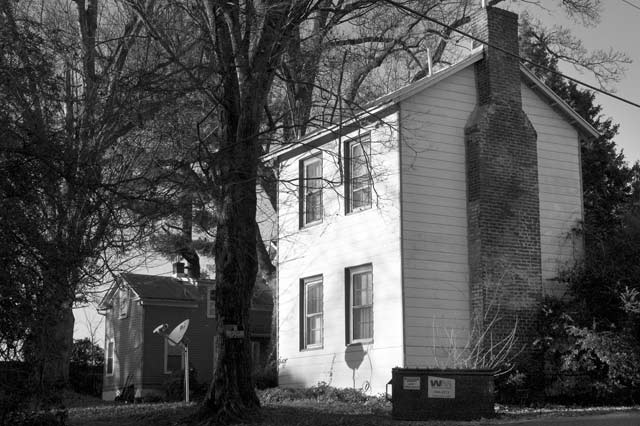survival

kitchen for "Piraeus" (the Marchant House)
The textile mills were caught in the process of filling autumn and winter orders. A large amount of short-term notes which had been received in payment for goods was defaulted. Mills became hard pressed for cash, many being forced to close down, others driven into bankruptcy. Following the immediate shock, stagnation gripped the industry and lasted until 1880.
How, one may ask, did the embattled Charlottesville mill succeed so well while powerful textile interests like the Sprague mills in New England with assets of $20,000,000 fell victim to the panic? First, it should noted that the lack of a preferred stock issue precluded a constant drain on resources. Common stock dividends could be and often were withheld. Furthermore, its wool purchases were much smaller than those of large mills and frequently were obtained from local farmers at prices which probably fluctuated less radically than the world market. In addition, the panic and depression of the 1870's caused a shift in demand to the coarser, cheaper goods made by the Charlottesville Woolen Mills during that era. Other factors could be mentioned--for example, the lower costs of labor in the South--but one especially deserves notice. That was the intense sense of sectional pride with which local inhabitants regarded the Mill. --Harry Poindexter
Labels: Henry Clay Marchant, Poindexter History

1 Comments:
Oh look, it's my nemesis, Large Tacky Satellite Dish.
Just for the record: Victoria Dunham, former long-time caretaker of this once lovely home, had nothing to do with that ostentatious contraption being installed there. One might as well park a big yellow school bus in the middle of the yard while one's at it.
That whirring sound you hear is Henry Clay Marchant spinning in his grave.
Post a Comment
<< Home